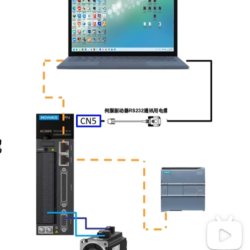Recently, Baoshan Iron & Steel Co., Ltd. has successively received Nippon Steel Corporation (Nippon Steel) Court summons, complaint and other related materials for three lawsuits filed against Baosteel in Tokyo District Court of Japan. As of the date of this announcement, the three cases have not yet been heard.
Nippon Steel claimed that Baosteel’s electromagnetic steel sheets supplied to Toyota Motor infringed three of its patents and sued for the three patents respectively.
The amount of compensation for each of the above cases RMB 10 billion.
In October 2021, Nippon Steel said in a statement that it had filed a lawsuit against Toyota Motor and China Baoshan Iron & Steel Co., Ltd. for patent infringement in the Tokyo District Court. Nippon Steel claimed that the two companies had infringed on its patents on non-oriented electrical steel sheets used in electric vehicles, and at the time demanded 20 billion yen (about $176 million) each from the two defendants.
At present, it should be the case disclosed by Nippon Steel last year, which has been officially delivered to Baosteel.
According to Baosteel’s announcement, “in the three cases, the amount involved is 20.42964 billion yen”, which means a total of RMB 3 billion in compensation. According to the Japan Steel announcement last year, only 20 billion yen was mentioned in the case, and several cases were not mentioned.
As mentioned in Baosteel’s announcement, the lawsuit involves the electromagnetic steel sheet technology that Baosteel provided to Toyota.
This is also mentioned in the statement of Nippon Steel last year. Nippon Steel believes that non-oriented electrical steel sheet is a kind of “high-performance material”, with significantly enhanced magnetic properties, achieved through a special manufacturing process. Electrical steel sheet is widely used in daily life as “iron core” generators for power plants, electrical products, Motor-driven vehicles, and vibration motors in mobile phones.
Last year, in a Reuters report on this, a spokesman for Nippon Steel said: “Electrical steel sheet is an indispensable material for vehicle electrification, is one of our key products to help decarbonize cars, electrical products and power plants.”
Regarding the sudden patent lawsuit by Nippon Steel, Toyota said in a statement in response to Reuters last year that the lawsuit “is very regrettable”, and no patent infringement issues were found.
Baosteel also stated that it does not agree with Nippon Steel’s claim and will “actively” defend its rights.
Judging from the IP strategy disclosed by Nippon Steel, there is a strong patent and brand protection plan, especially for overseas markets and counterfeit products, it adopts a more active and rights-protecting attitude.
At present, in addition to patent litigation with Baosteel and Toyota,and Spain’s largest steel pipe company Tubassex are also in patent disputes in China.
China Industry & Legal Community Views of Nippon Steel Lawsuit
The production technology of non-oriented electromagnetic steel is the core of the dispute in this case. This kind of steel is used in the production of motors for new energy electric vehicles. There is no specific bias during steering to keep the rotation stable. Therefore, non-oriented electromagnetic steel is also considered to be one of the core materials for new energy vehicles in the future.
At present, there are not many enterprises that can produce non-oriented electromagnetic steel in the world. There are very few domestic steel enterprises represented by Baosteel and Shougang, which have the ability to produce non-oriented electromagnetic steel. In Japan, there are Nippon Steel and Japan JFE. In addition, South Korea’s Posco also has this capacity.
Previously, Japanese companies’ non-oriented electrical steel materials had the highest market share in the world. In the process of research and development of this process by various companies, there have also been similar technical patent lawsuits.
In 2013, Posco, the largest steel-making company in South Korea, also started the production of non-oriented electromagnetic steel products, and the production technology related to Posco came from a resigned employee of Nippon Steel in Japan. At that time, Nippon Steel sued South Korea’s POSCO for infringement. Because the facts were sufficient, POSCO finally admitted their fault, reached an understanding with Nippon Steel, and paid a certain amount.
So will Nippon Steel’s lawsuit against Toyota and Baosteel this time be as effective as its previous lawsuit against South Korea’s Posco? Actually, this time the situation is very different.
First of all, the source of the technology of South Korea’s POSCO is clear, and it was secretly transferred by employees of Japanese companies who have resigned. The production of non-oriented electromagnetic steel of Baoshan Iron and Steel is independently developed by Baosteel. Although some imitations may be involved, such behaviors are very difficult to define.
On the other hand, there is also the issue of the scope of application of patents. Nippon Steel’s patent on non-oriented electromagnetic steel was applied in Japan in 2000, and the scope of application is limited to Japan. Therefore, this lawsuit only requires Toyota to prohibit the use of cars produced and sold in Japan and does not propose that Baoshan Iron and Steel should not be produced in China.
Before Nippon Steel decided to sue, it refused to negotiate and communicate with Baosteel or Toyota and filed a lawsuit without receiving a response and proof from the other party.
However, it may take a long time to demonstrate whether the case really involves infringement, and it is estimated that it will be at least one year or even longer.
The difficulty of the case is that technological innovations such as non-oriented electromagnetic steel mainly belong to the improvement of the manufacturing process, and can not be judged easily like ordinary patent plagiarism. In the face of Nippon Steel’s prosecution, both Baosteel and Toyota denied it.
Baosteel Co., Ltd. stated in its official response on October 16, 2021: “We believe that patent identification should be based on rigorous and scientific technical exchanges and verification between the two parties, and Baosteel Co., Ltd. does not agree with Japan Steel’s unilateral claim. ” “Baosteel will actively respond to the technical patent lawsuit brought by Nippon Steel and resolutely defend the company’s rights and interests.” In response to Nippon Steel’s allegations, Toyota pointed out: First, the non-oriented electromagnetic steel used by Toyota was obtained from Chinese suppliers. If Nippon Steel believes that the material is infringing, it should find the supplier instead of suing the user. . Second, when Toyota obtained the supply from Baoshan, it had already verified with Baosteel and believed that these materials were not infringing.
In response to this case, many observers in Japan also believe that Nippon Steel’s lawsuit this time does not actually have a good chance of winning.






